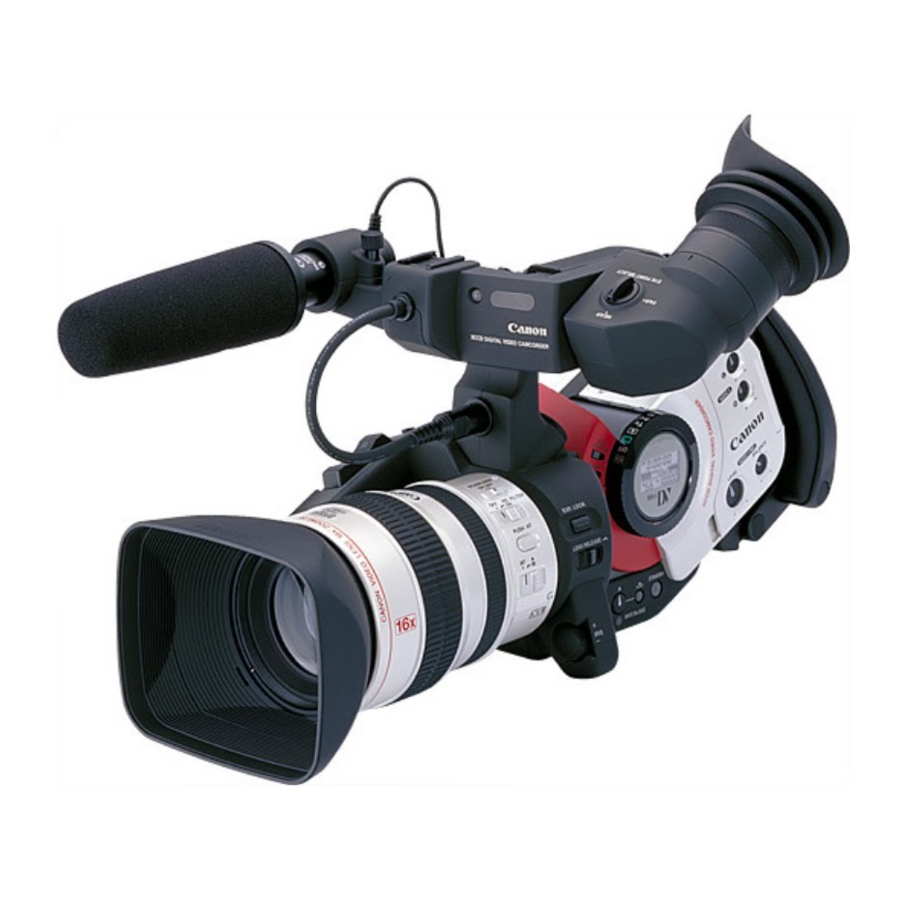Canon XL 1 Manual do utilizador - Página 19
Procurar online ou descarregar pdf Manual do utilizador para Câmara de vídeo Canon XL 1. Canon XL 1 26 páginas. Camcorder
Também para Canon XL 1: Brochura (8 páginas), Especificações (1 páginas), Instruções (2 páginas), Brochura e especificações (8 páginas), Manual do utilizador (9 páginas), Manual (9 páginas)

Frame types and compression
You can reveal many fundamental concepts of compression by looking at the kinds of
frames in a file. Depending on the codec and options used, one, two, or three kinds of
frames may be in a file. A key frame, or I-frame, is a complete image that is
compressed using intraframe compression. An I-frame isn't based on any other frames
in the file. The first frame of a movie is always an I-frame. A delta frame is
compressed using interframe compression and contains only those portions of the
adjacent frames that are different. If two frames are mathematically identical, and the
second one is a delta frame, it will require only a few bits to encode. But if more than
half of the image is different, most codecs automatically generate a new I-frame. For
typical content, a delta frame might be only 10-20% the size of the same frame at the
same quality as an I-frame.
There are two main types of delta frames: P-frames and B-frames. The content of a P-
frame (predictive frame) is based on the previous frame; the content of a B-frame (bi-
directional frame) is based on the previous and subsequent frames.
Audio compression
While audio may use only a small fraction of the bits in a compressed file, it is
responsible for half of the experience.
Sampling rate
The most fundamental factor in audio is sampling rate, which is measured in Hertz
(Hz), or cycles per second. Audio CDs use 44100 Hz, or 44.1 kilohertz (KHz), which
provides excellent reproduction.
Sample
Used
8 KHz
Phone system
11 KHz
Old multimedia standard
22.050 KHz
Also old multimedia standard
32 KHz
Common in broadband video
44.1 KHz
Audio CD
48 KHz
DVD, DAT
96 KHz
High-end audio recording
Bit depth
Bit depth is the number of bits used for each sample in each channel—the higher the
bit depth, the better the audio quality.
• 8-bit sampling This bit depth, which was responsible for that harsh sound in the
early CD-ROM titles, produces fairly poor quality audio. There is no reason to
Sufficient for
Speech
Better speech
Recognizable music
Minimum for decent music
Music
Music
Music mastering
19
